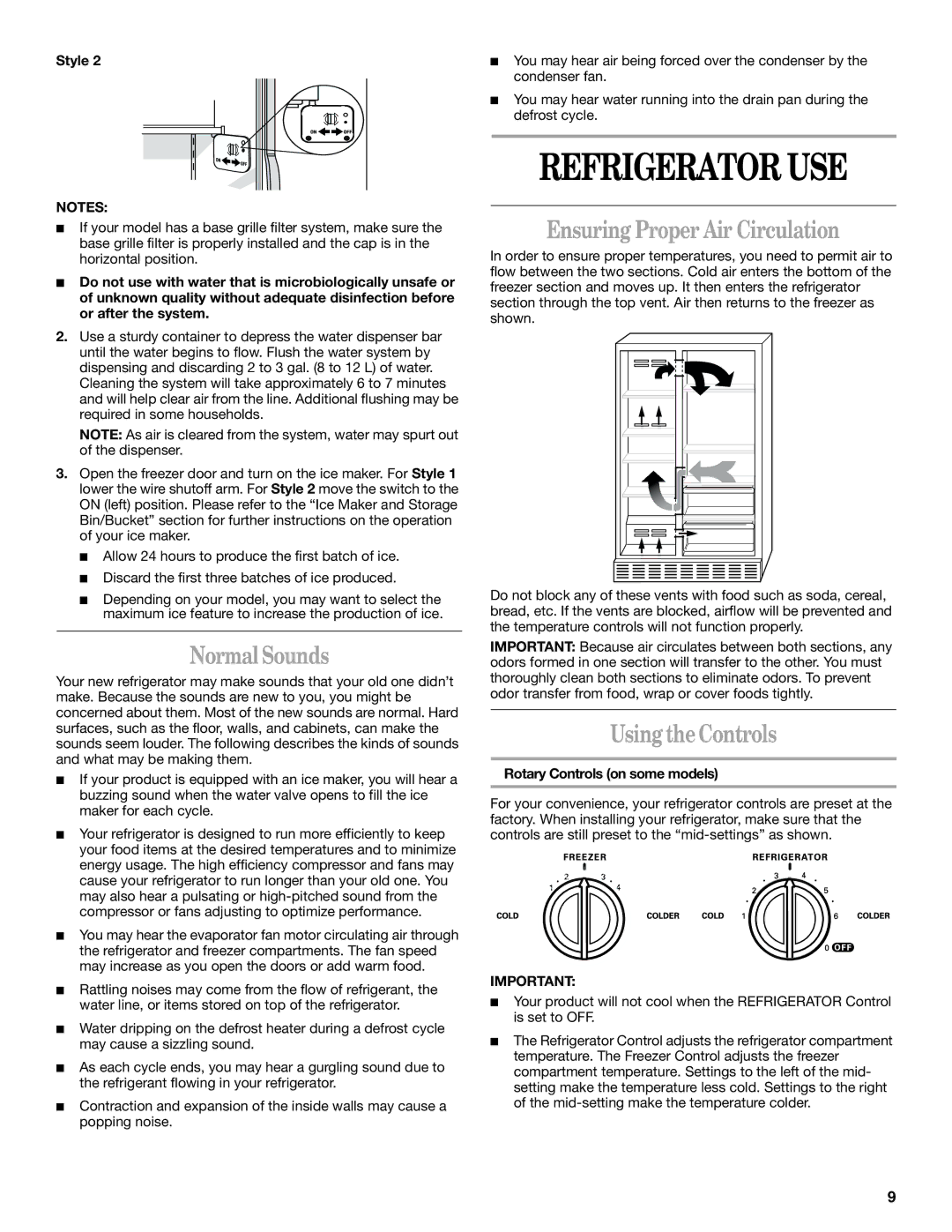ED2FTGXKQ00, ED2FHGXKQ01, ED2FHGXKT03, ED2FHGXKQ03, ED2FHGXKQ00 specifications
The Whirlpool ED2FHEXLQ00, ED2FHEXLT01, ED2FHEXLB01, ED2FHEXLT00, and ED2FHEXLQ01 are part of Whirlpool's well-regarded refrigerator line, designed to elevate kitchen performance while seamlessly integrating into modern homes. These models share an array of advanced features and technologies aimed at optimizing food storage and enhancing convenience for users.One of the standout features of these Whirlpool refrigerators is their spacious interior layout, designed with flexibility in mind. Each model includes adjustable shelves that can be repositioned to accommodate larger items, allowing for customized storage solutions. In addition to this, the models are equipped with gallon door bins, which provide ample space for beverages and condiments, making essentials easily accessible.
The cooling technologies incorporated in these models are noteworthy, particularly the Adaptive Defrost system. This intelligent feature monitors the frost buildup within the freezer, activating the defrost cycle only when necessary. This not only helps maintain a consistent temperature but also enhances energy efficiency, reducing overall power consumption.
Energy efficiency is further supported by Whirlpool's commitment to sustainability. These refrigerators support ENERGY STAR certification, which signifies that they meet or exceed strict energy efficiency guidelines set by the EPA. As a result, users can enjoy the benefits of a high-performance refrigerator without the guilt of excessive energy usage.
Additional technologies included in these models consist of the Ice Maker feature, which provides a continuous supply of ice, perfect for entertaining or everyday use. The fridge also features humidity-controlled crisper drawers, designed to create an optimal environment for fruits and vegetables, helping to prolong freshness.
For those who value aesthetics, the Whirlpool ED2FHEXLQ00 and its counterparts offer a sleek, modern design available in a variety of finishes that can complement any kitchen decor. The exterior features a fingerprint-resistant stainless steel surface, facilitating easy maintenance and a polished appearance.
Overall, the Whirlpool ED2FHEXLQ00, ED2FHEXLT01, ED2FHEXLB01, ED2FHEXLT00, and ED2FHEXLQ01 models stand out in the crowded refrigerator market thanks to their thoughtful design, energy-efficient technologies, and user-friendly features. They reflect Whirlpool’s dedication to quality and innovation, making them a worthy addition to any home.

